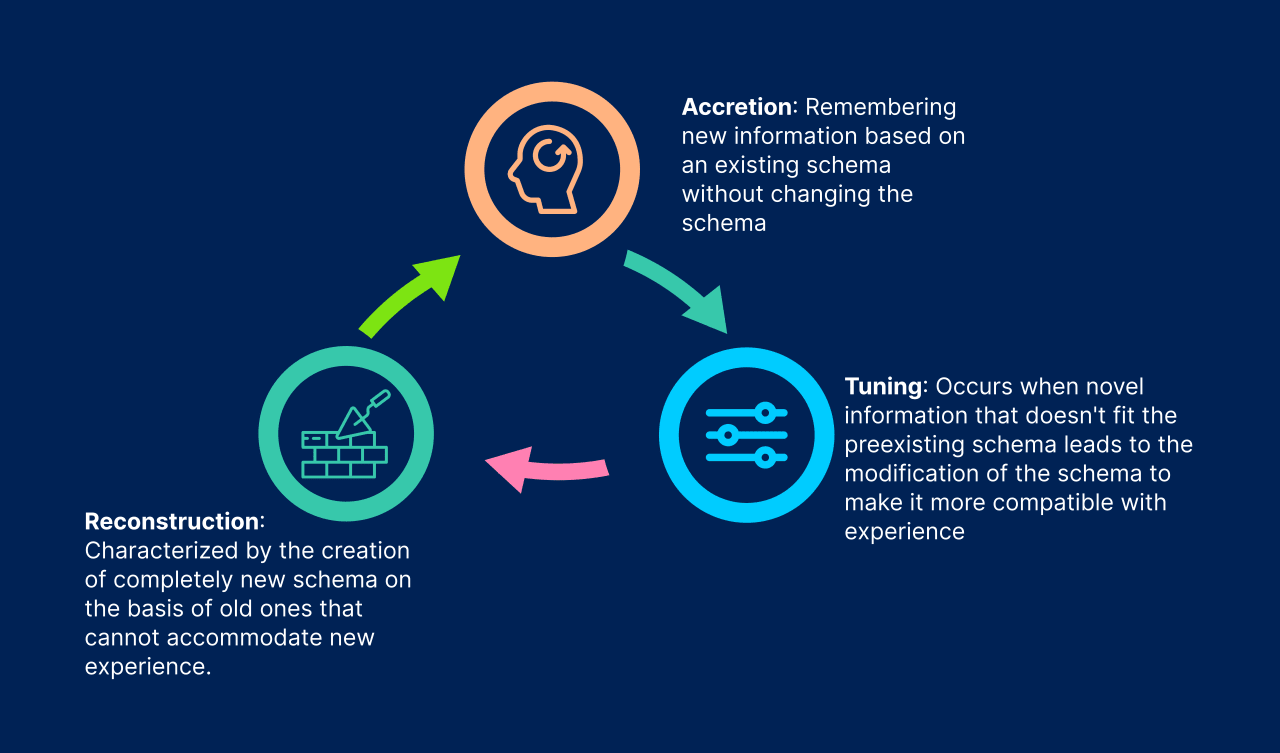What is cognitive learning theory?
Cognitive learning theory is a way of describing how learners receive, store, and retrieve information while learning. Cognitive learning theory offers an effective foundation which helps bridge the gap between traditional instruction and student-centred teaching methods.

Cognitive learning theory is a way of describing how learners receive, store, and retrieve information while learning. Cognitive learning theory offers an effective foundation for a constructivist approach to education, helping bridge the gap between traditional instruction and student-centred teaching methods. Cognitivism first emerged in the early 20th century sparked by the shortcomings of behaviour learning theory. Behaviourism suggests students learn through interaction with the environment. A simple example of behaviorism is positive reinforcement. A student gets a small treat if they get 100% on their math test . The inadequacy of the behaviourist tradition to explain why and how individuals process information led to the transition from behaviourism to cognitivism (i.e., how the mental processes work).
💡 Lessons learnt: Education is what survives when what has been learnt is forgotten.
Components of cognitive learning theory
The foundation of cognitivism comes from a spectrum of cognitive theories, specifically the individual cognitive trend derived from Piaget's studies and the sociocultural trend derived from Vygotsky's works.
Piaget’s Theory of Cognitive Development
In Piaget's theory, the idea of a schema is crucial and has an explanatory power. Schema is a hypothetical mental structure for classifying, representing, and storing abstract ideas and general events in mind according to common patterns. Three processes characterize the schema acquisition and the changes in existing schemata namely; accretion, tuning and reconstruction.

Educators are entreated to:
- Provide unifying themes for content because information without a theme can be difficult to understand or, worse, the learner may "accrete" the information to the incorrect schema.
- Provide a relevant learning context in order to activate an existing schema.
- Create and implement techniques for students to structure what they learn and thus make it more memorable, such as information mapping or advanced organizers.
- Represent what experts know to help the learning process and use case-based reasoning for knowledge representation.
- Make instructional material meaningful by identifying the learner's mental model and providing conceptual models created by teachers, designers, scientists, or engineers to aid in the comprehension of some target system.
- Select texts with "standard" layouts so that they conform to student expectations.
- Ask questions to determine what students’ current schema might be.
- Pay close attention to the comments and answers of the students because they may reveal information about how they are organizing the information they're receiving.
Vygotsky’s Social Cognitivism
Social Cognitive Theory frequently examines how people regulate their behaviour in order to form goal-directed habits. Unlike many other learning theories, Social Cognitive Theory evaluates actions over time rather than examining how a person begins their behaviour. Major takeaways from social cognitivism are:
- Learners should be given authentic situations in which they must solve problems.
- Development should come after instruction.
- In the classroom, social "partners" should be at different stages of development and should collaborate to solve the problem.
Teaching strategies for applying Cognitive Learning Theory
When it comes to integrating effective cognitive learning strategies for your audience’s needs, consider identifying the most suitable approach, determining how success can be measured, and understanding any potential pitfalls associated with cognitive learning. Reciprocal teaching, Anchored instruction, Inquiry learning, and Discovery learning are all instructional strategies based on cognitive learning theory that can be applied in the classroom. Combining cognitive models with other instructional strategies can increase effectiveness even further.
By understanding the principles of this field, we can better understand how our minds work, allowing us to apply these concepts in educational and social settings for improved learner outcomes.

Adiutor
Adiutor means "helper" - we do just that, by taking a load of your school administration and helping you focus on what matters most: the kids.
